Record 5–4–1 Playoff finish did not qualify Years active 1943–1943 | Division place 3rd NFL Eastern Founded 1943 | |
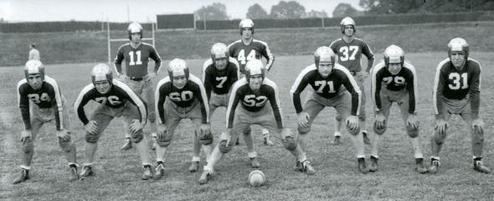 | ||
Owner Alexis Thompson, Art Rooney & Bert Bell | ||
The Steagles were the team created by the temporary merger of two National Football League (NFL) teams, the Pittsburgh Steelers and the Philadelphia Eagles, during the 1943 season. The teams were forced to merge because both had lost many players to military service during World War II. The league's official record book refers to the team as "Phil-Pitt Combine", but the unofficial "Steagles", despite never being registered by the NFL, has become the enduring moniker.
Contents
- History
- Draft deferments
- 1943 NFL Spring Meetings
- 1943 season
- Legacy
- In popular culture
- 60th anniversary
- Player Selections
- Standings
- Week 1 vs Brooklyn Dodgers
- Week 2 vs New York Giants
- Week 6 vs Washington Redskins
- References
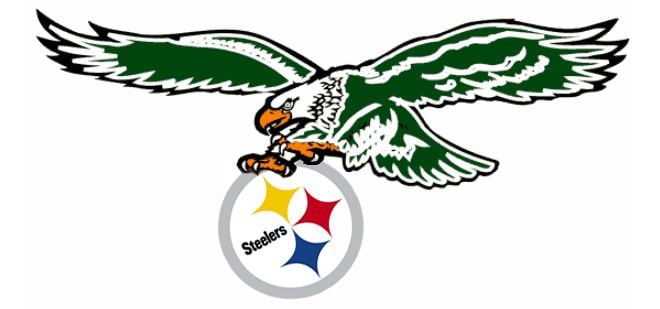
History
The prospect of a unified Pittsburgh-Philadelphia team actually predated World War II by several years. The Pennsylvania Keystoners were a team that was proposed in 1939, conceived with the intention of the Steelers and Eagles owners buying into one of the two teams, then spinning the other off to an ownership group in Boston, Massachusetts. League officials rejected the plan, though it resulted in a convoluted ownership "two-step" that left Eagles owner Bert Bell with a share in the Steelers franchise.
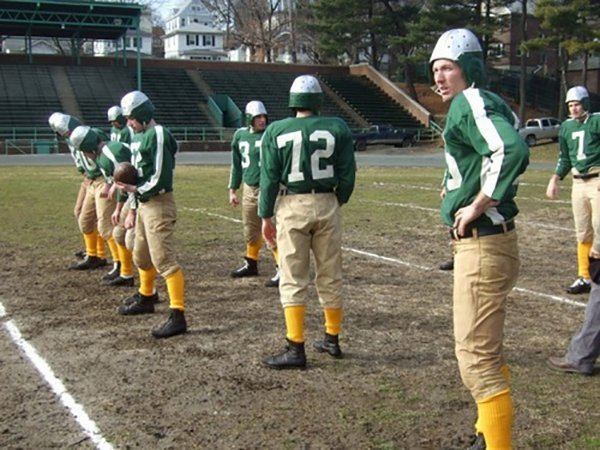
America entered World War II on December 7, 1941 with the Japanese attack on Pearl Harbor. Most of the young men who were of the age to play professional football were also of the age to fight for their country. 600 NFL players joined the armed forces.
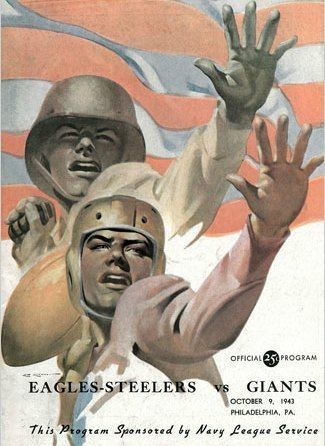
Feeling that country at war still needed entertainment and sports were a much-needed diversion, President Franklin D. Roosevelt issued an inspirational message focused on the importance of Major League Baseball to Americans' morale. He made no mention of football, during that address, as baseball far surpassed football in popularity at the time. However at its 1943 annual spring meeting, the NFL decided to follow baseball's lead and continue play. Other football leagues, such as the 1940–41 American Football League, Dixie League and the American Association, decided to suspend operations instead, leaving the NFL and its West Coast counterpart, the Pacific Coast Professional Football League, as the only leagues playing professional football at the time.
Draft deferments
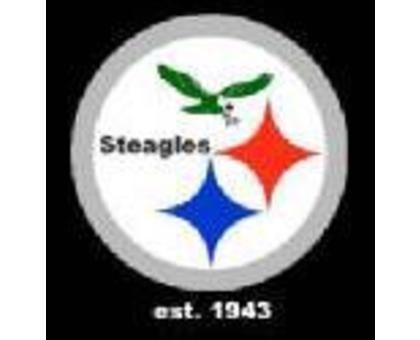
The young men who remained in the States to play football were deferred from the draft. The Steagles players were either unfit for military service for physical reasons or age, or active servicemen who had obtained leave to play. Three types of deferments defined 1943 NFL players. The first group was called 3-As. If a man was supporting a family the draft board would not make him a priority. The government defined a 3-A as a father whose child/children was born or conceived prior to the attack on Pearl Harbor. The cutoff date for birth was September 15, 1942, precisely nine months and one week after Pearl Harbor. The second group consisted of those men who worked in the war industry, producing and preparing ammunition, weapons and materials. The third group (4-F'S) were those deemed physically unfit due to ailments such as ulcers, flat feet and even partial blindness. Most NFL football players wanted to join the war. In the early 1940s it was considered a patriotic duty to serve and fight for the country. Being classified as a 4-F was an embarrassment. Playing football and being ridiculed was added embarrassment. However, there was a feeling that if a man could play football then he could fight in the war. One Steagle and future Hall of Famer, Bill Hewitt, quit in the middle of the season. He could not take the ridicule and subsequent guilt feelings anymore. Hewitt was good enough to be inducted into the Pro Football Hall of Fame in 1971. However the players were not making the decisions on who could or could not fight. Men with flat feet were not drafted. They could lead normal lives and even play football, but the Army deemed that flat feet was not conducive to marching long distances. Similar reasons existed for other 4-F deferments. But numerous NFL players in 1943 had medical problems that kept them out of the military. Tony Bova, the Steagles' leading receiver with 17 receptions, was blind in one eye and partially blind in the other. Steagles guard Ed Michaels was nearly deaf and center Ray Graves was deaf in one ear. One starting defensive end was blind in one eye and nearly legally blind in the other. The Steagles tailback John Butler made his first start one day after being ruled 4-F by his draft board for poor eyesight and bad knees.
1943 NFL Spring Meetings
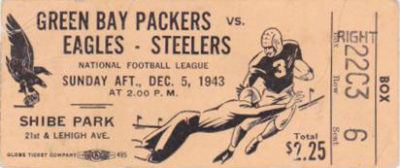
Even with these deferments, NFL rosters were hurting. The Cleveland Rams suspended operations and the Pittsburgh Steelers had only six men left under contract while the Philadelphia Eagles had only sixteen. The 1943 NFL Draft did not help much. Most players drafted went off to the war instead of joining NFL teams. Further exacerbating the issue was the continued insistence of George Preston Marshall and other NFL on continuing the ten-year-old ban on black players, which disqualified potential replacement players such as Kenny Washington. The league nearly ceased operations before the 1943 season, but it continued.
Steelers' owner Art Rooney knew that the league needed at least eight teams to survive. Rooney's idea was to merge the Steelers with the Eagles. This idea came quickly to him since two years earlier he thought about combining the two teams into the Pennsylvania Keystoners. Eagles' owner Alexis Thompson, who was serving in the US Army as a corporal, was not as keen on the plan since he at least had 16 players under contract. However Thompson remembered how Rooney in 1941 swapped cities with him, allowing him to keep the Eagles in Philadelphia, close to his New York City home. This led to an agreement on combining the teams.
The league approved the merger by a vote of 5–4. However, several owners expressed fears that the merger would produce a team with an unfair advantage. The merger had a slight lean in favor of Philadelphia based on stipulations imposed by Thompson. The team would be known as the Philadelphia Eagles and be based in Philadelphia. Rooney had very little leverage, bringing only six players to the table. However he was successful in landing two home games in Pittsburgh, while Philadelphia would host four. The team was also to wear the Eagles' green and white colors instead of Pittsburgh's black and gold. This event officially marked the only time in the Steelers history other than 1941, when green and white were used as well as black and gold, [1] that the team colors were something other than black and gold. The league also stated that helmets were mandated for the first time and that the league would expand in 1944, with the Boston Yanks paying $50,000 for entry into the league.
1943 season
Philadelphia's Greasy Neale and Pittsburgh's Walt Kiesling would be co-head coaches because each coach refused to be demoted. This led to several problems: the first being that the two men hated each other. Secondly even Kiesling's own players didn't like him so asking the Eagles players to like him was too much to ask. However Neale took advantage when Kiesling was delayed en route to camp, which was held at St. Joseph's College in Philadelphia. By the time Keisling arrived, Neale already had the offense learning the T-formation, which was all the rage in those days because of its success in college football by Frank Leahy at Notre Dame and for Red Blaik at Army. This conflict led to Neale serving as the team's offensive coordinator while Kiesling served as the defensive coordinator. They would then split head coaching duties. According to defensive back Ernie Steele, the situation between the two coaches got so bad that Kiesling and Neale walked off the field after a heated argument in practice the Friday before a game. They returned for the game, but the players were nonetheless stunned. However, after the Steagles' in 1943 & Card-Pitt in 1944, Pittsburgh reverted to using the single-wing formation through 1952, becoming the last NFL team to ever use it as its primary offensive set.
Another difficult issue that at the time, was that the Steelers and Eagles were bitter interstate rivals, much like the NHL's Pittsburgh Penguins-Philadelphia Flyers rivalry of today, and usually ended up at near the bottom of standings each year. The Steagles were the only professional sports team where all the players held full-time war jobs, as it was a requirement of the team. Playing football was seen as an extracurricular activity. All of the 25 players on the roster kept full-time jobs in defense plants. One of Pittsburgh's players, Ted Doyle, worked at Westinghouse Electric and figured out later that his work assisted the Manhattan Project, which was America's effort to build the first atomic bomb, according to Matthew Algeo's book Last Team Standing.
As the season got underway, fans and newspapers began calling the team the Steagles, a combination of Steelers and Eagles. It had a nice ring to it and was fair to both cities. Steagles eventually became the common name used for the team throughout most of the country, except in Philadelphia, where the writers and even the team insisted on being called the Philadelphia Eagles. Chet Smith, the sports editor of the Pittsburgh Press, was initially the one who wrote in a column the moniker Steagles, for the merged team (and according to the Pittsburgh Post Gazette).
Slowly, the team began to come together, united by hard work, shared sacrifice, and teamwork. The Steagles jumped out to a 2–0 start after defeating the Brooklyn Dodgers and New York Giants at Shibe Park. During the New York game the Steagles fumbled the ball a record 10 times, but managed to win 28–14. The Steagles record of 10 fumbles in game by 1 team is still in existence today. The squad of outcasts and misfits then banded together and managed to shockingly tie the defending champion Washington Redskins in their first meeting, and even defeated Washington in their second meeting. The team stumbled on the road and after seven games was 3–3–1. However the team regrouped during two games at Pittsburgh's Forbes Field, which were wins over the Chicago Cardinals on Halloween Night and over the Detroit Lions on Nov. 21. The team's final game was played in front of 35,000 fans at Shibe Park against Don Hutson and the Green Bay Packers Green Bay would go on to win the game 38–28.
Legacy
The Steagles 1943 season was the Philadelphia franchise's first winning season in its history and the second for Pittsburgh's.
The next season, 1944, the NFL was back on solid footing. The Army had declared that it had enough soldiers and men over 26 years of age would not be drafted, though the league had another problem. With the Cleveland Rams back in operation, the expansion Boston Yanks team in the fold and the Eagles and Steelers back in their separate ways, the NFL had 11 teams, which created a nightmare with divisions and scheduling. NFL Commissioner Elmer Layden begged for two teams to combine again in 1944. Ten teams made for a perfect league and eleven seemed impossible. The Steelers were still short of players due to the war. Pittsburgh owner Art Rooney was unhappy with the "Phil-Pitt" arrangement, but wanted to keep it intact. However, Philadelphia refused, so the team merged with the Chicago Cardinals for the 1944 season, creating a team known as Card-Pitt. This "Card-Pitt" team was derisively called "carpet" due to going winless, and the commentary that "every team walked all over them". The war ended by the time the 1945 NFL season started, and with the Brooklyn Tigers and the aforementioned Boston franchise permanently merging, there was an even number of ten teams to the delight of owners.
The Eagles, now having enough players back from the war, resumed their traditional operation and continued under Neale, who took home back-to-back coach of the year awards as Philadelphia won consecutive NFL championships in 1948 and 1949.
Individually, the Steagles' Jack Hinkle ended the season with 571 rushing yards. He lost the rushing title to New York's Bill Paschal by one yard. Against those very Giants Hinkle was not given credit for a 37-yard run (they gave it to John Butler). Hinkle did not complain about not winning the NFL rushing crown. He figured with a war going on there were better things to cry about. Tony Bova, a half-blind 4-F, led the team in receiving with 417 yards.
In popular culture
The 1971 film "The Steagle" starring Richard Benjamin takes its name from the Steagles football team. In the opening scene, the protagonist of the film, a bookish college professor, explains the history and meaning of the term to a pair of loudly arguing sports fans on a commuter train, and draws an admiring look from an attractive Asian woman who is a fellow passenger. The film concerns the personality change which overcomes the protagonist during the Cuban Missile Crisis of 1962, and the film's title implicitly references the transient nature of the Steagles team, existing for only one brief season during a national crisis.
60th anniversary
The Steelers celebrated the 60th anniversary of the Steagles on August 17, 2003 during the pregame and halftime ceremonies at Heinz Field.
Six of the nine surviving members of that team were honored at halftime. Those members were quarterback Allie Sherman, running back and defensive back Ernie Steele, center Ray Graves, and tackles Al Wistert, Vic Sears, and Bucko Kilroy. End Tom Miller, tackle Ted Doyle and halfback John Hinkle were unable to attend. Wistert was the last surviving player of the combine and died in 2016 All three of the surviving players belonged to the Eagles. Ted Doyle, who died in 2006, was the last surviving Steeler player from the team.
In addition the Steelers recreated the Steagles era in their "Turn Back the Clock" ceremonies, including broadcasting in black and white on the Jumbotron and airing World War II footage during the national anthem. All live entertainment reflected the 1940s. During the festivities the Steelers gave each of the six members a replica Steagles jersey to wear. The jerseys worn by honorees were later given back to the Steelers and sold to help benefit a local charity. The Steelers also painted the south end zone in plain diagonal white lines, a common practice in the NFL until the 1960s. The Steelers later kept the "plain" design in the south end zone permanently. The Eagles won the game 21–16.
Player Selections
The table shows the Eagles selections and the Steelers selections and what picks they had that were traded away and the team that ended up with that pick. It is possible their pick ended up with this team via another team with whom they made a trade. Not shown are acquired picks that were traded away.
Standings
Note: Tie games were not officially counted in the standings until 1972.
Week 1: vs. Brooklyn Dodgers
The Steagles held the Dodgers to minus 33 rushing yards; this was the second lowest rushing total posted by a single team in an NFL game to that point. It currently ranks as the third-lowest rushing output in league history.
Week 2: vs. New York Giants
Despite setting a league record by fumbling the ball ten times, the Steagles overcame the Giants on the strength of three fourth-quarter touchdowns. The mark of ten fumbles in a game by one team has since been matched three times, but it has never been topped.
Week 6: vs. Washington Redskins
The 1942 NFL Champion Washington Redskins come to Philadelphia with a 13 regular season game winning streak, and for 1943 scoring an avg of 30 points per game and allowing on 6 a game.
